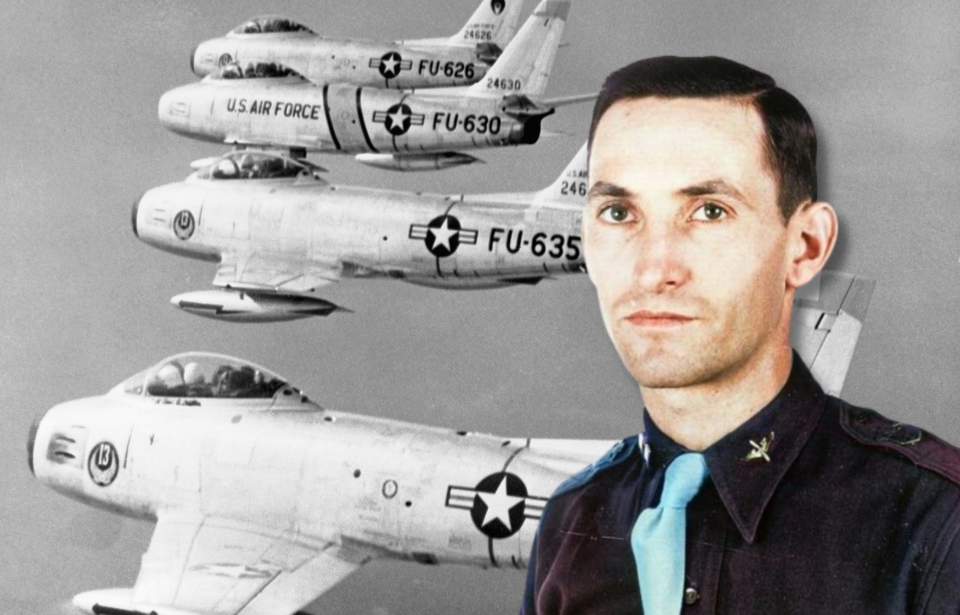George Andrew Davis Jr. was a Medal of Honor recipient who valiantly served during World War II and the Korean War. Born on December 1, 1920 in Dublin, Texas, he joined the US military at a young age and dedicated his life to being a fighter pilot. In what would be his final combat mission, Davis displayed great courage and skill that ultimately foiled the enemy’s plan to disrupt a US mission. Unfortunately, it came at the cost of his life.
George Andrew Davis Jr. served as a pilot during World War II
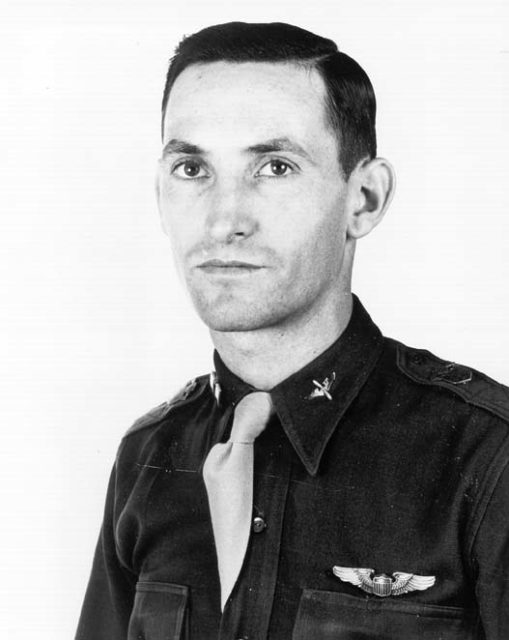
On March 21, 1942, George Andrew Davis Jr. joined the US Army Air Forces as an aviation cadet. The following February, he was commissioned as a second lieutenant. By August 1943, he was assigned to the 342nd Fighter Squadron, 348th Fighter Group, Fifth US Air Force, tasked with flying the Republic P-47 Thunderbolt in the Pacific Theater.
Davis spent nearly two years flying with the 342nd, flying 266 combat missions over 705 hours of flight time. During the Second World War, in which he participated in the Battle of Cape Gloucester and the Philippines Campaign, he shot down seven enemy aircraft and became a fighter ace. For this, he was awarded the Distinguished Flying Cross with oak leaf cluster, the Silver Star and the Air Medal with eight oak leaf clusters.
Returning to the United States on May 3, 1945, Davis continued to serve as a flight commander, flying fighter jets at a number of military bases. He was also an active member of the “Sabre Dancers” aerobatic demonstration team. This group was eventually disassembled, but served as the predecessor to the famed Thunderbirds, who became the US Air Force’s official demonstration team.
In February, 1951, prior to his involvement in the Korean War, Davis was promoted to the rank of major.
Taking out two enemy Mikoyan-Gurevich MiG-15s
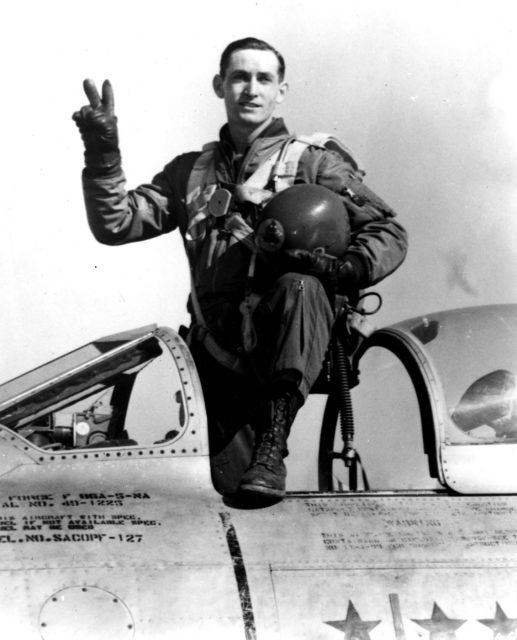
George Andrew Davis Jr. was sent to Korea and assigned squadron commander of the 334th Fighter-Interceptor Squadron, 4th Fighter-Interceptor Wing. It only took a few months for him to become one of the leading aces of the Korean War, amassing 14 victories, one probable victory and two damaged aircraft during the conflict.
On February 10, 1952, Davis and his team of four North American F-86 Sabres came across 12 enemy Mikoyan-Gurevich MiG-15s while on an aerial patrol. The aircraft, flown by pilots with the Chinese 4th Fighter Division, were approaching American Republic F-84 Thunderjets fulfilling an interdiction mission along the Yalu River, near the Manchurian border. Reacting quickly, Davis charged at the enemy formation and engaged them in combat.
One of the pilots and his wingman had to withdraw due to oxygen loss, but the remaining joined in the attack. During combat, Davis successfully took out two MiGs. His forceful assault put him under continuous fire from the enemy fighters, but he never backed down.
George Andrew Davis Jr. was struck by enemy fire
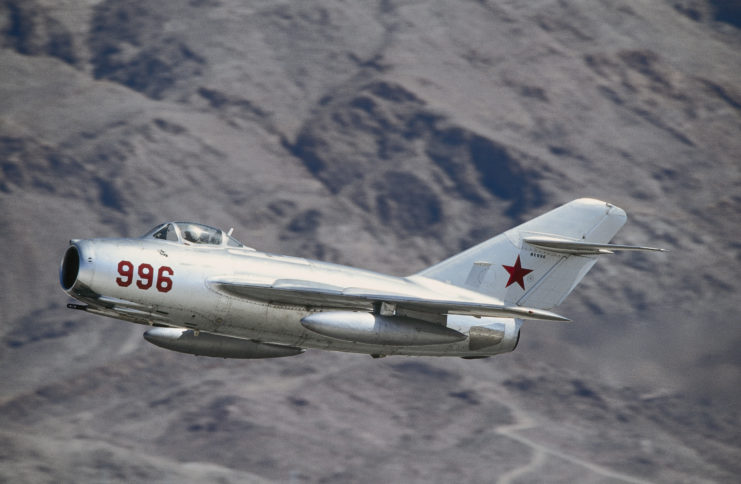
Following his attack of the two MiG-15s, George Andrew Davis Jr. could have escaped the enemy aircraft that had him under fire, but he was intent on disrupting their formation. Instead of withdrawing, he attempted to attack a third MiG by slowing his F-86 and shooting directly at the enemy.
It was during this attempt that his aircraft suffered a direct hit. The impact caused Davis to lose control of the fighter jet, and as he dropped from the sky, his wingman, First Lt. William Littlefield, saw his F-86 crash into a mountain 30 miles south of the Yalu River. The incident killed the 31-year-old. This marked Davis’ 60th combat mission in the Korean War, and the two MiGs he took out were his 13th and 14th kills.
A week after his F-86 was downed, Davis’ body was recovered by the Chinese, who never returned it to the US.
Posthumously awarded the Medal of Honor
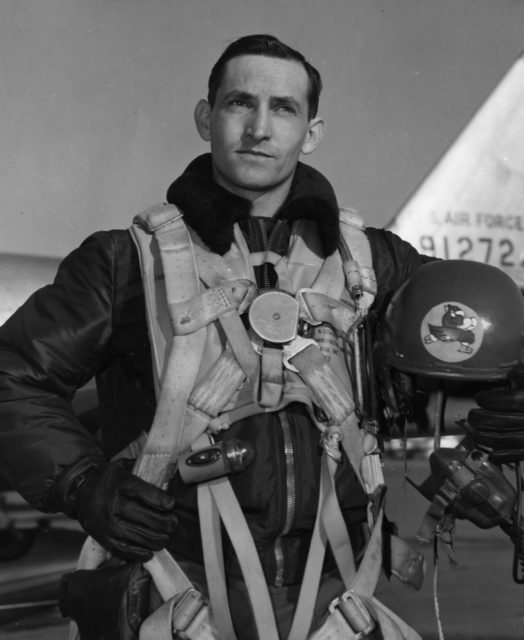
In 1953, George Andrew Davis Jr. was posthumously promoted to the rank of lieutenant colonel. Just over a year later, his wife, Doris, accepted the Medal of Honor award on his behalf. Also in attendance were his parents and three children, one of whom was born following his death.
More from us: The Truth Behind Royce Williams’ Legendary Dogfight was Hidden for 50 Years
As Davis’ body was never returned to the US, there are two places where his death is honored. His name was inscribed on the Wall of the Missing at the National Memorial Cemetery of the Pacific – better known as the Punchbowl – in Honolulu, Hawaii. Additionally, a Medal of Honor headstone was erected in Lubbock, Texas in his honor on November 16, 1990.
